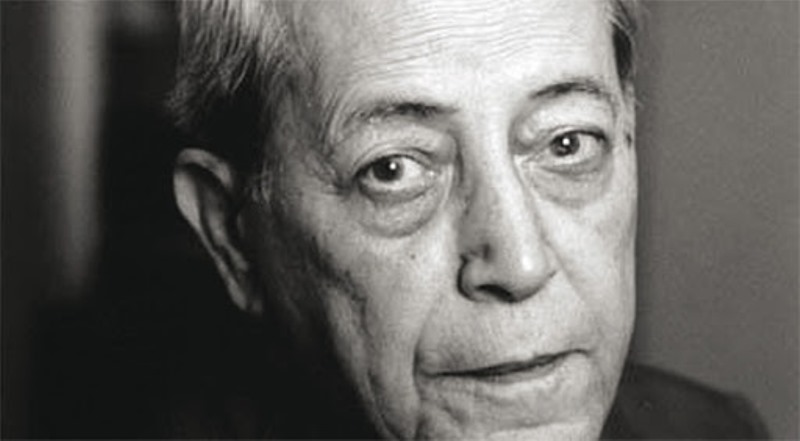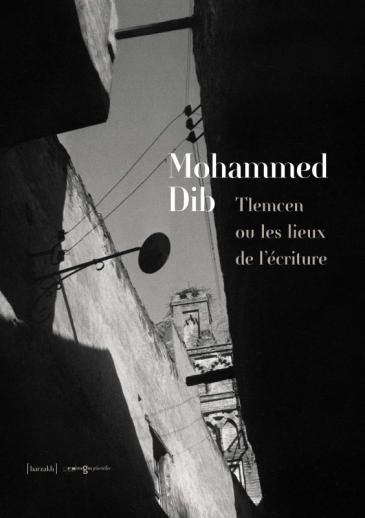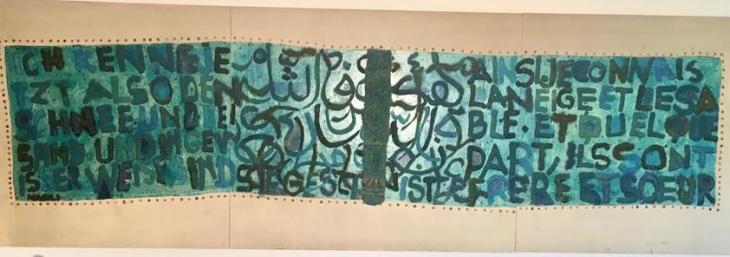The grand seigneur of French-language Algerian literature

He may have had the appearance of a British gentleman, but in 1993 he said: "We will always be regarded as the immigrants and gypsies who camp on the edge of town and are suspected of stealing the locals' chickens." The following year, he became the first Maghrebi author to receive the Grand Prix de la Francophonie from the Académie Française. More than once, he was spoken of as a potential winner of the Nobel Prize for Literature. Mohammed Dib was the grand seigneur of French-language Algerian literature and one of the greats of world literature as a whole.
He was born into an impoverished artistic middle-class family that upheld the courtly legacy of Moorish Andalusia in the western Algerian city of Tlemcen in 1920. He tried out various ways of earning a living – as a teacher of nomadic children in a rural school, a bookkeeper, an army interpreter, a journalist and a carpet designer – before finding his true calling: writing.
His autobiographical photo essay Tlemcen ou les Lieux de l'Ecriture (which translates as "Tlemcen or Places of Writing") provides a moving insight into the milieu of Dib's childhood and youth. A new, expanded edition has just been published in Algeria (by Editions Barzakh) with a foreword by Waciny Laredj and a new design by Louise Dib, who has inherited her grandfather's artistic talent.
Author of Algeria's national epic
Mohammed Dib achieved worldwide fame early on with his Algerian trilogy: La grande maison ("The Big House", 1952), L'Incendie ("The Fire", 1954) and Le métier à tisser ("The Loom", 1957). He was thus at the forefront of the first generation of Maghrebi authors writing in French, which includes Algerian writers Kateb Yacine (1929–89), Mouloud Feraoun (1913–61), Mouloud Mammeri (1917–89), Assia Djebar (1936–2015), the recently deceased Tunisian author Albert Memmi (1920–2020) and the Moroccan Driss Chraïbi (1926–2007).

La grande maison, which was published in Germany as Das große Haus, was the first ever novel by a Maghrebi author to be translated into German (Volk&Welt, East Berlin). In it, Dib painted a picture of the terrible poverty and the burgeoning revolts among the Algerian population under the French colonial regime at the start of the Second World War. Alongside Henri Alleg and Kateb Yacine, he got involved with the Communist Party, writing social criticism articles for the Party paper Liberté and the Alger Républicain, and was promptly expelled from the country by the colonial authorities. In 1959, he and his wife Colette Bellissant initially settled in the south of France.
But Dib was never able to re-establish himself in post-colonial Algeria, where the FLN's one-party regime refused to tolerate any criticism. Nevertheless, his extensive body of work (which grew to 37 volumes written over the course of 51 years, including novels, poetry, plays, essays, short stories, folk tales and children's stories) had Algeria at its heart to the very last, even if his later works were set elsewhere in the world.
The literary equivalent of Guernica
Right to the very end, Mohammed Dib experimented with literary forms and themes, and right to the end, he remained true to his humanistic aspirations, insisting that an author's literary ambition and his ethical responsibility must be a unified whole.
His Algerian trilogy – which was translated into 20 languages, filmed for Algerian television in 1974, and is still a staple of the curriculum for Algerian schoolchildren – was written in a naturalistic style. But the horrors of the Algerian war of independence (1954–1962) led to a radical change in Dib's writing. From then on, his work included surreal and dreamlike elements and borrowed from depth psychology, mysticism and science fiction.
In the foreword to his fantasy novel Qui se souvient de la mer (1962; published in English as Who Remembers the Sea, 1985), which uses apocalyptic images to create a nightmarish fresco of the war of independence, Dib explicitly drew on Picasso's painting Guernica, as he wondered: "How can one write about Algeria after Auschwitz, after the Warsaw Ghetto, after Hiroshima?"Sadaqa – humanity as a central concept in Dib's literary cosmos
While Dib's four subsequent novels – Cours sur la rive sauvage (1964), La Danse du roi (1968), Dieu en Barbarie (1970) and Le Maître de chasse (1973) – continued to criticise the excesses of Algerian state socialism and began to develop new socio-political visions, he moved quite definitively into the category of exile literature in 1977 with the novel Habel. Set in the huge, overwhelming city of Paris, it posed the question of our responsibility for one another with greater currency than ever: "Am I my brother's keeper?"

Echoes of religious themes and the great myths of humanity are leitmotifs in Dib's body of work, as are the topoi of (existential) forsakenness and the sense of (cultural) dislocation, man's eternal search for himself and for the other... whom he sees in himself, and in whom he also recognises himself.
Dib was the master of the thrillingly incisive image and sentence: "It is odd that the world is always full of foreigners," he wrote in his novel Les Terrasses d'Orsol ("The Terraces of Orsol", 1985), a bitterly angry north-south parable with Kafkaesque passages, in which the protagonist, an ambassador from the global South, finds himself thrown into the turmoil of a pit inhabited by misshapen creatures outside the gates of a futuristic metropolis: a metaphor for those who live on the edges of society, migrants, asylum seekers, for the mighty chasm between rich and poor, north and south, with which Dib is familiar from his own experience.
Finland and California; snow and desert sand
Starting in 1975, he travelled around Finland, translated the works of its authors, and in his own novels transformed the vast Finnish forests into introspective internal landscapes, woven through with Nordic myths and Islamic mysticism (1989: Sommeil d'Eve – "Eve's slumber"; 1990: Neiges de marbre - "Marble snow").
Invitations to the USA (as a guest lecturer at the University of Los Angeles in 1974) lent new rhythms to his crystalline poetry, a spirit of gospel, jazz and blues. 2003, the year of Dib's death, also saw the publication of his book L.A. Trip, a verse novel with American elements embedded in it. It circulated online as a bilingual edition. In 1998, L'Enfant-Jazz, which was illustrated by the Algerian calligraphy artist Rachid Koraichi, won him the prestigious Prix Mallarmé.
Dib has become a monolith in the Algerian literary landscape, his work towering above everything with its overwhelming abundance, its great diversity and its radical originality. His philosophical, enigmatic cosmos is not always as accessible as it is in his fairy-tale novel L'Infante Maure, written in 1994 with the wisdom of age, in which nine-year-old Lyyli Belle, the offspring of two migrants – a Polish mother and a Maghrebi father – explains snow to her imaginary desert-sheikh grandfather in a Finnish midsummer night's dream.
In the end, she realises that the two have more similarities than differences: "So now I know the sand and the snow. And in a certain way, they are siblings." This is the key sentence in this novel, which can be read as a poetic plea for intercultural tolerance, a literary manifesto against Huntington's Clash-of-Civilizations thesis, which was published the previous year.

Highlights of the Dib memorial year in France and Algeria
Events to mark the Mohammed Dib Centenary include the recently published special edition of the renowned Parisian literary journal Europe (Jun–Aug 2020), which is devoted to Mohammed Dib and edited by Hervé Sanson, and a symposium organised by the Société Internationale des Amis de Mohammed Dib, which is due to take place in the illustrious surroundings of the Château de Cérisy in Normandy from 1 to 5 September.
In Algeria itself, the packed agenda of events for the Dib memorial year, which should have begun in February, has been postponed due to coronavirus.
The one element of this agenda that has been retained, however, is the awarding of the Prix Mohammed Dib by the cultural association La Grande Maison, formerly the Fondation Mohammed Dib, which is based in the author's hometown. The jury met online on 27 June. The longlist featured 23 authors and works in all of Algeria's literary languages: Arabic, French and Algerian Berber. An international conference on Dib's oeuvre with the title "Atlals" (traces) is also planned for 17–19 October.
Dib himself liked to speak of his body of work as a "constellation". How fitting then that the centenary of this man's birth, who Algerian Dib specialist Naget Khadda says left the world a "sparkling trail of light", happens to coincide with the rare spectacle of a comet passing the earth. Dib fans worldwide may see this as a salute from the cosmos...
Regina Keil-Sagawe
© Qantara.de 2020
Translated from the German by Ruth Martin